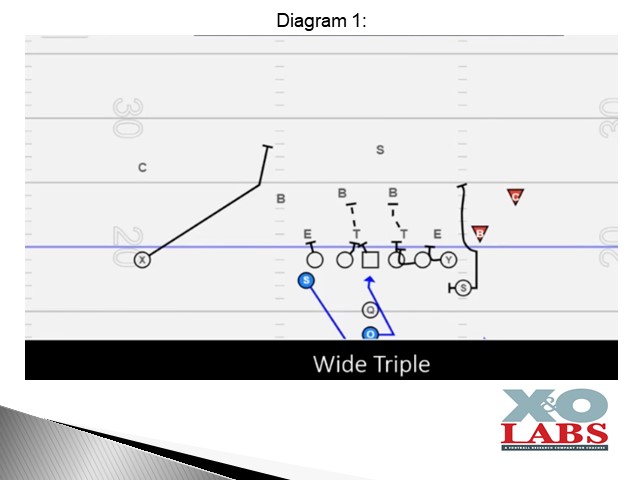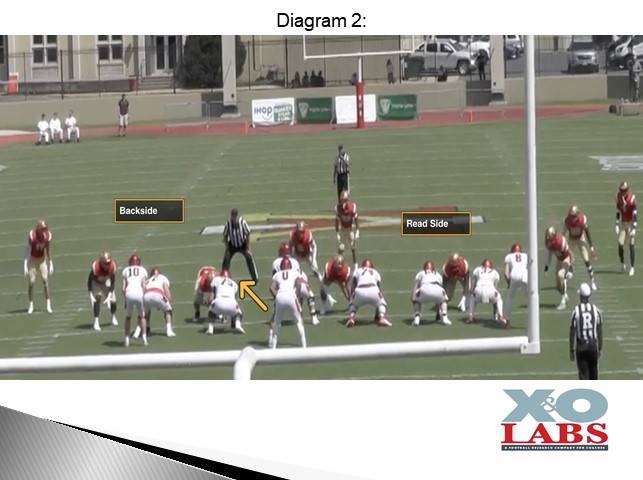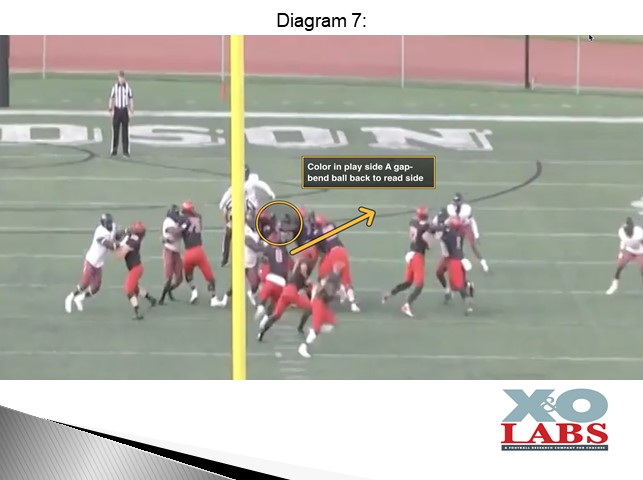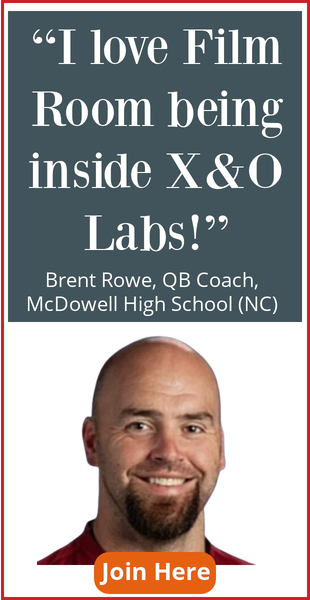By Mike Kuchar with Scott Abell and Vince Munch
Head Coach and Run Game Coordinator
Davidson University (NC)
Twitter: @Scott_AbellFB and @_CoachMunch
Editor’s Note: Since Davidson is an option team, the read side of the play is denoted as the backside of the concept.
There is a common adage among tight zone enthusiasts in the footwork world and that is if you can’t clear the A gap, you’re not going to have much of a play. At Davidson University, an option outfit which has been in the top two nationally in rushing since 2017- the cornerstone of its inside zone is to displace the A gap and as head coach Scott Abell told me, “if we can’t capture A gap we are going to move it across formation.” How it’s able to do that is by a strict reliance of technique work in the form of what run game coordinator Vince Munch calls an “influence reach” block, which we will expound upon later in this report.
Now, to be clear, Davidson calls the inside zone wide triple, because the read key is extended into the D gap and there is a pitch element tied to it.

And because they are an option outfit, the read side and play side are inverted in their language. In this report, the read side is where they are reading the play. “Our frontside is the typical teams backside because that is who we are reading,” said Coach Abell. “We want to capture everything on the backside and cut off a defense.”

In Davidson’s vernacular, they call everything to a read key because they are an option team. “We want our offense to know where we are reading because we are a read zone triple team,” said Coach Abell. “We communicate first to the read side.” And because Davidson’s a pure triple option team, not a read option team, defenses are forced to account for both the quarterback and the pitch back. And when they are forced to defend the entire width of the field, that’s when you get those A gaps creased.
“Elongating the Shelf”
70 percent of snaps of Davidson’s wide triple comes from four-surface elements. And the reasoning is simple: the read key gets bumped over a gap, forcing defenses to have overhang players be read responsible.

Coach Abell said it became a game changer for his scheme, although it took a while to get there from the gun. “We figured let’s just add another blocker to the surface and force the play to bend wider,” he said. “We kept our zone principles so when the running back bends it back to the read key it looks like outside veer. It puts a lot of stress on the front surface of a defense.”

QB/RB Mesh:
The off-set alignment mesh is cleaner and hits faster, but the problem is you may be tipper your hat some based on alignment. So, Davidson prefers to utilize the concept from Pistol alignments which keeps the offense ambidextrous allowing them the possibility of flipping the play. So, when they run it from the Pistol, the running back takes a play side lateral step with his backside (read side) foot while his play side foot gets him the angle to his true aiming point: the backside A gap.

The ball carrier is actually taught to bend the ball back to the read key. After his lateral step to the read side, his second step gets his hips on the angle to the backside hip of the Center. If he sees daylight play side, he takes it.

If there is no daylight play side, he looks to bend the ball back to the read defender. “We always start with the play side A gap then it works back,” said Coach Abell. “Our biggest plays happen when running back bends it back to the read key.” Defensive techniques force us to wind back. They are committed to stopping our inside run game. They are slamming, pinching and moving to take away inside gaps. We are willing to take that more often than not.










